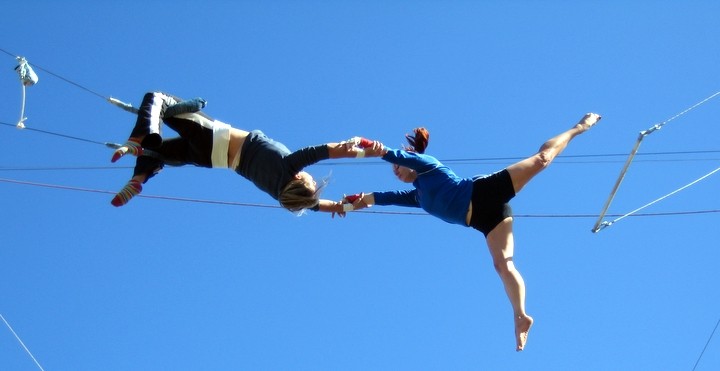(This post is written for alumni of LEAD365, although all are welcome to read it.
It was originally published on November 30, 2015.)
A few weeks back we had a man come to do some work on our living room carpet, and he and I started to slide our very heavy couch out of the way. He stopped and said, “Wait a minute, I’ll go get my sliders.” He came back thirty seconds later with some Teflon wedges to put under each foot of the couch, which made the sliding 90 percent easier.
Having a lot of trust in a work team is like having Teflon sliders under the couch. Everything goes about 90 percent easier in a team with a high level of trust. And not only does trust make things easier, it also makes a big difference in the effectiveness of the team. Unfortunately high levels of trust on teams is rare.
Building trust on a team starts with knowing and trusting yourself, including being clear on your beliefs. It also starts with being trustworthy. As is so often the case, this nugget is incredibly simple—be trustworthy if you want to build trust. As my sons used to say, “No duh!”
But also like so many key nuggets, it’s often NOT easy to do the simple thing. It’s hard to be trustworthy. Being trustworthy goes beyond the big things like not lying, cheating, or stealing. It also includes the small things, like letting your “yes” be yes and your “no” be no. It turns out that many of us don’t do this very well.
If I say I’ll have a task completed for you by Monday and then don’t complete it until Wednesday, that doesn’t build trust, it tears it down. If I say I’ll be home at six o’clock and then don’t get there until 6:45, that tears down trust.
Let your “yes” be yes and your “no” be no. Over time, that allows others to trust you. And make no mistake, trust is built slowly over time, and it can be torn down in seconds.
In my twenty-one years of consulting, I have found low trust to be a significant problem with executives of all flavors. I’m not only talking about whether can I trust your intentions, but also your abilities—and your willingness to show up and let me know what you’re thinking—and your propensity to follow through on your promises.
Patrick Lencioni, one of my favorite authors on leadership, says trust is the foundation for any healthy executive team. One of the ways he says trust is built is by being transparent even when it puts you in a vulnerable state.
In order to drive his point home quickly, Lencioni calls this willingness to be transparent, even when feeling vulnerable, “getting naked,” which he named one of his books. His fable Getting Naked is a great story about leadership and team health, and I highly recommend it. Whenever I assign it to a leader or a team, I always suggest the book be put face-down when on their desk. Not everyone will understand the title!
The Speed of Trust, by Stephen M. R. Covey (Stephen Covey’s son), is another good book on trust. Covey brings up some interesting theories about trust that I agree with.
He claims that trust is based on two characteristics, each made up of two components. The first is character and the second is competence. It’s obvious that if we don’t trust someone’s character we won’t find him or her trustworthy.
The second is a little more surprising, though. I’d never thought about not trusting someone because of their competence—or lack thereof—but upon some reflection I think he’s right on. Covey maintains that we humans don’t trust other people when they don’t exhibit competence. Would you trust the most moral person you’ve ever met to do brain surgery if she hadn’t already demonstrated that she is a good surgeon? I suspect not.
So if someone isn’t demonstrating competence through her capacity and past results, this leaves team members with an underlying lack of trust in that person. This lack of trust in a team member can create a very vulnerable situation. Covey claims you aren’t really trusting the other person, and Lencioni would say you need to share that with them, even though that feels very vulnerable. And of course you know there is a proper way to have these kinds of conversations and that they need to be done very well. Remember the model we use called “Leaning Into Healthy Conflict”?
It’s a rare team that does this well, but those that do it are amazing, as teams and also as individuals. I bet you can think of something this week—one thing—that you could do better in order to build greater trust with your team or even with your family. Pick something and do it. I would love to hear what you chose, how you did, and if you could feel the trust level starting to build.
If you do this over a long period of time, you’ll construct some relational Teflon sliders making everything go much easier.
Thanks for being a leader worth following! I hope your week is a great one!
Rodg
Image by Mark Setchell. Used under CC By 2.0 license.

